Ok, let’s say you’re on a budget, for both money and space, need audiophile quality sound, but have a post-modern minimalist décor, and were born after say 1990 and therefore don’t have a ton of media lying around and aren’t afraid of modern technology and streaming services, have I got a system for you. Three boxes, three cables, and a smartphone, and you’re done. Too good to be true? Not on your life, especially when the three companies are DALI Speakers, Bluesound electronics, and Cardas cables.
DALI Speakers OBERON 7 Floor-standing Loudspeakers:
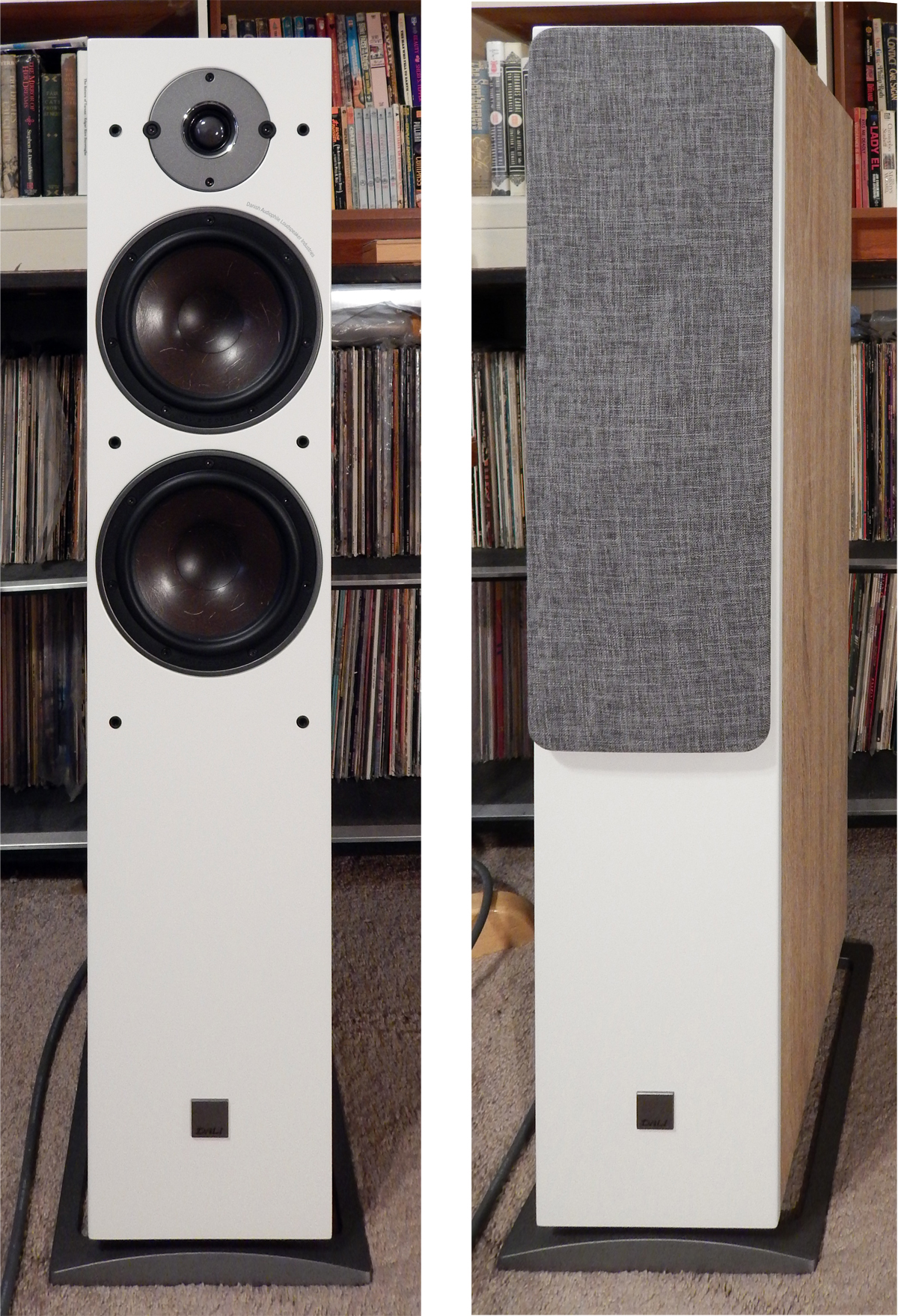
DALI (Danish Audiophile Loudspeaker Industries) as the name implies is a Danish loudspeaker company that has been building audiophile-quality speakers since 1983 with all the ultra-modern style and elegance that Danish furniture is famous for. What sets DALI apart from other speaker manufacturers is that they design and build their drivers in-house (another thing the Danish are known for is high-end speaker drivers), with a focus on musical realism, to quote DALI, “At DALI, we are driven by a raw passion for music and its honest reproduction in the domestic environment. The development and refinement of new technologies to increase the realism of the home entertainment experience is the main objective in our quest to create what we believe to be the best loudspeakers in the world.”
The DALI OBERON 7 is part of DALI’S line of home theater with all of the high efficiency and dynamics that is a requirement for that market segment (making them a perfect match for the Bluesound POWERNODE 2i), without sacrificing sonic integrity (DALI understands that most people don’t have room for two sound rooms, one dedicated to audio and one to home theater). Ironically, though the OBERON 7 is a 40” tall floor standing speaker it has the smallest footprint of any the speakers I have reviewed thus far including the bookshelf speakers, making it ideal for smaller as well as larger rooms.
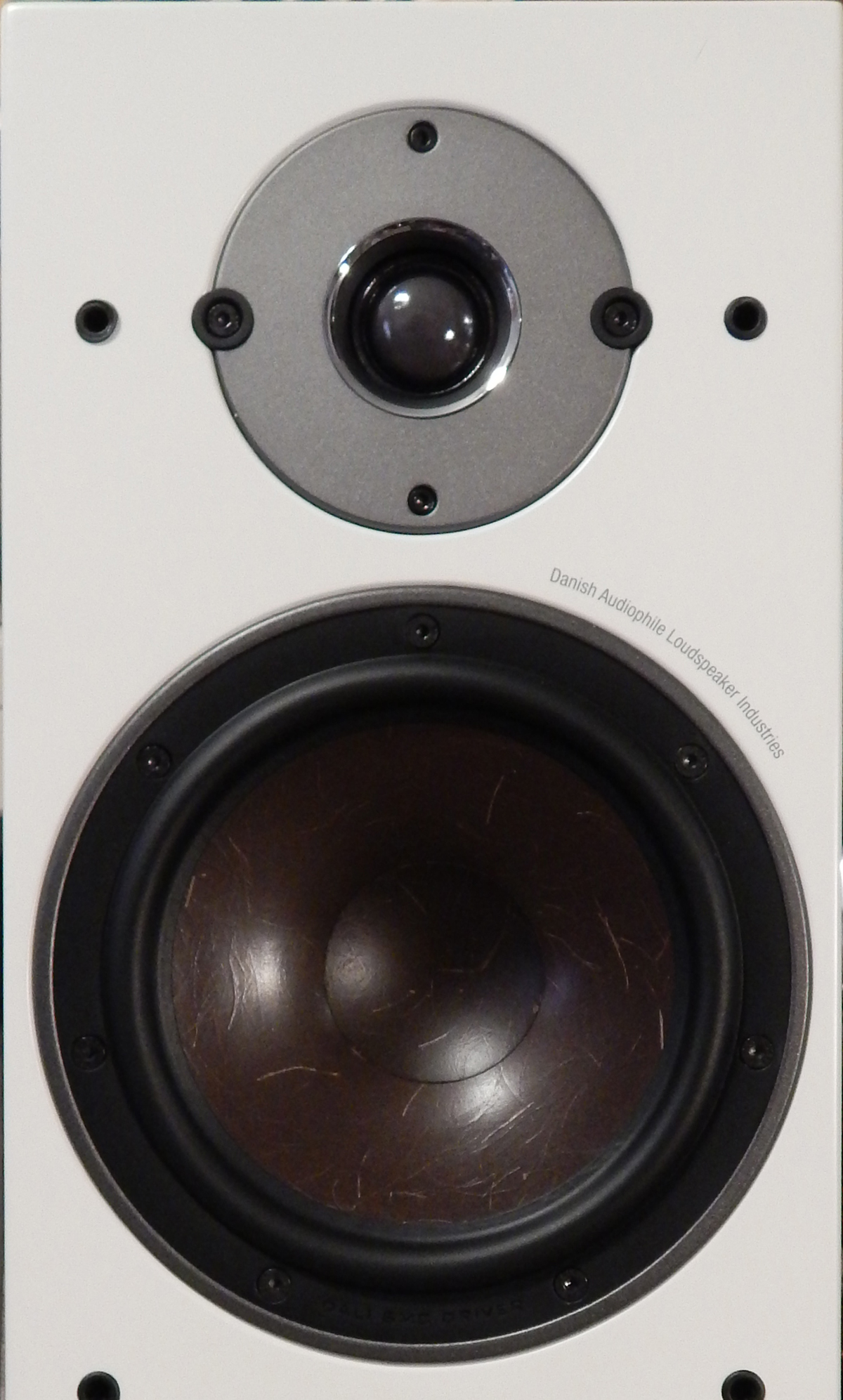
OBERON 7 loudspeakers employ two custom made low-loss 7” wood fibre woofers with rubber surrounds, 4 layer voice coils, and an SMC/ferrite magnet structure designed to perform well into the midrange for smoother crossover. The tweeter is a purpose-built 29 mm ultra-light soft dome tweeter optimized for a wider bandwidth. The vinyl dressed high-density CNC machined MDF cabinets sit on an aluminum base that is fitted with removable adjustable spiked feet. Featuring a rear-mounted Bass Reflex port, they are specifically designed with extra-wide dispersion for on-axis placement to reduce harmonic distortion. Available in four finishes:






The pair I received for review were the Light Oak which have a deep texturization to give them a natural look and feel.
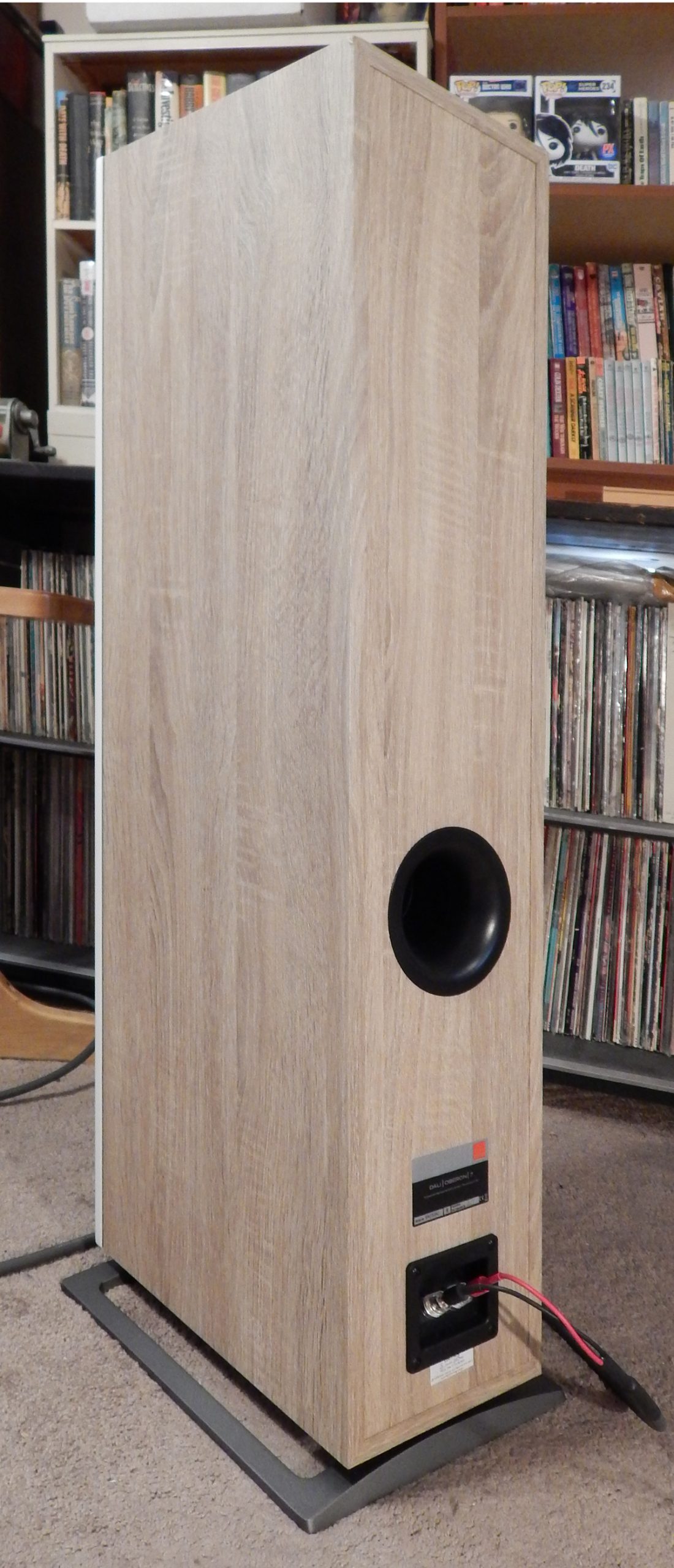
Manufacturer’s Website: https://www.dali-speakers.com/us/products/oberon/oberon-7/
Price: $1,499 USD
Specifications:
| Product series | OBERON |
| Frequency Range (+/-3 dB) [Hz] | 36 – 26,000 |
| Sensitivity (2,83 V/1 m) [dB] | 88.5 |
| Nominal Impedance [ohms] | 6 |
| Maximum SPL [dB] | 110 |
| Recommended Amplifier Power [W] | 30 – 180 |
| Crossover Frequency [Hz] | 2,300 |
| Crossover Principle | 2-way |
| High frequency driver, Quantity | 1 x 29 mm |
| High frequency driver, Diaphragm type | Soft Textile Dome |
| Low frequency driver, Quantity | 2 X 7″ |
| Low frequency driver, Diaphragm type | Wood Fibre Cone |
| Enclosure type | Bass Reflex |
| Bass Reflex Tuning Frequency [Hz] | 39.5 |
| Connection Input | Single Wire |
| Recommended Placement | Floor |
| Recommended Distance From Wall [cm] | 20 – 80 |
| Dimensions With Base (HxWxD) [mm] | 1015 x 200 x 340 |
| Accessories Included |
Manual Rubber Feet Spikes Front Grille |
| Weight [kg] | 14.8 |
Bluesound POWERNODE 2i Wireless Multi-Room Music Streaming Amplifier:

The heart of our system is the Bluesound POWERNODE 2i Wireless Multi-Room Music Streaming Amplifier. Equiped with a 60 Watt per channel HybridDigitalTM amplifier it is a perfect match for the DALI OBERON 7. In times past it would have been referred to as a receiver as it is source, controller, and amplifier in a single package, but that only scratches the surface of its capabilities. Here is a quick list of the POWERNODE 2i’s features:
- HybridDigital™ amp and DAC technologies ensures flawless playback with precision and clarity.
- 60 Watts x 2 into 8 ohms of HybridDigital™ power.
- HDMI (ARC & eARC) connectivity.
- Featuring digital and analog input/output options, headphone stereo mini jack, and subwoofer out.
- Access and stream Internet radio stations, cloud music services, and your own local music library to multiple Bluesound Players.
- Create and control a seamless multi-room system with the intuitive BluOS Controller app.
- Control it with the optional Bluesound RC1 Remote Controller
- Connect Bluesound to your Amazon Echo with the skill in the Alexa app and use Amazon’s Alexa voice assistant to control Players around the home.
- AirPlay 2 lets you play music or podcasts from wireless stereo components throughout your house — all in sync.

The POWERNODE 2i supports Apple AirPlay 2, premium music services like TIDAL®, Deezer®, Qobuz®, and Spotify®, with full MQA processing where available, as well as virtually all other popular music services plus internet radio stations which are already built-in. It is also able to connect directly to a NAS, Pen Drive, or Hard Drive to access your music library, in addition to analog inputs for use with a CD player or phono stage equipped turntable (like the VPI Player reviewed HERE), Optical Digital inputs, and HDMI ARC for connection to a television.
Primary control of the POWERNODE 2i is handled through the BluOS Controller app which is available for Android, iOS, or Kindle devices, as well as, Windows or MacOS, but it also can be operated via voice command with skills and support for Amazon Alexa, Google Assistant, and Apple’s Siri. Furthermore, through the BluOS Controller app, the POWERNODE 2i can be integrated into a multi-room system employing Bluesond speakers throughout the home.
For personal audio enthusiasts, the POWERNODE 2i offers a headphone output and Bluetooth 5.0 with aptX HD support.
In appearance, the POWERNODE 2i is a small elegant rectangle, available in black or white, with rounded corners and a touchpad control panel inset in the top of the unit (Volume Up/Down, Pause/Play, Track Advance/Return). The front panel is adorned with a single 3.5mm TRS headphone jack and a single multi-color LED (mirrors indicator in center of touchpad). The back panel is a little more crowded sporting a 3.5mm Optical In/Analog In 1 (TRS), Subwoofer Out (RCA), USB (TYPE A) In (External Hard Drive), IR In (for IR repeaters), 3.5mm Optical In/Analog In 2 (TRS), USB (TYPE B Mini) Service Port (not for consumer use), Service Control Button, HDMI ARC In, LAN Port (Ethernet cable provided), Five-Way Binding Posts for Speaker Output, and the AC Mains In.

Manufacturer’s Website: https://www.bluesound.com/products/powernode/
Price: $899 USD
Specifications:
AUDIO
| Supported File Formats |
MP3, AAC, WMA, OGG, WMA-L, ALAC, OPUS Hi-Res formats – FLAC, MQA, WAV, AIFF |
| Power Output |
HybridDigital™ Amplifier, 60 Watts x2 into 8ohms |
| Native Sampling Rates | 32 – 192 kHz |
| Bit Depths | 16 – 24 |
| Performance |
SNR – 90dB Distortion, THD+N – 0.008% |
| DAC | 32-Bit, 384kHz |
| Supported Operating Systems | Plays music from network shares on the following desktop operating systems: Microsoft Windows XP, 2000, Vista 7-10, Apple Macintosh 7-10 |
| Free Internet Radio | TuneIn Radio, iHeartRadio, Calm Radio, Radio Paradise, LiveXLive, Radio.com |
| Supported Cloud Services | Spotify, Amazon Music HD, TIDAL, Deezer , Qobuz, HighResAudio (VAULT Required), Napster, KKBox, Bugs, Taihe Music ZONE, SoundMachine, IDAGIO, OraStream |
| Voice Control Integrations | Amazon Alexa & Google Assistant Skills |
| Integration Partners | Control4, RTI, Crestron, URC, push, iPort, ELAN, Lutron, roon, Airplay 2 |
| Album Art | JPG |
| NOTE: | *Some services, features and technologies will be available soon with a firmware upgrade |
CONNECTIVITY
| Network |
Gigabit Ethernet RJ45 Wi-Fi 5 (802.11ac, dual-band) |
| USB |
1 x Type-A port for connection to USB memory sticks (Fat32 or NTFS
formatted) and supported peripherals 1 x Type-B (mini) for product servicing |
| Audio Input | Combo – TOSLINK / 3.5mm |
| Audio Output |
Headphone output – 3.5 Stereo 5-way speaker binding posts Subwoofer output – RCA |
| Bluetooth Quality | Bluetooth 5.0 aptX HD wireless built-in |
| Bluetooth Connectivity | Two-Way (transmit & receive) |
| Power | Universal tri-pin AC Cord input (100 – 240AC) |
USER INTERFACE
| Mobile Operating System | BluOS – Free Android and iOS App Available Online at Google Play and Apple App Store |
| Pushbuttons | Simple top-panel touch controls. |
| Control | IR Sensor built in – Front panel |
GENERAL
| Processor | ARM® CORTEX™ A9, 1 GHz |
| Unit Weight | 1.72 kg / 3.8 lbs |
| Gross Dimensions |
220 x 70 x 190 mm 8.7 x 2.75 x 7.5 in |
| Power Consumption (Idle) | 10 Watts |
| Accessories |
2x AC power cords (Europe & North America) Ethernet Cable Toslink Optical to 3.5mm Mini Adaptor |
| Storage Environment | -10° C to 50° C, 20% to 80% relative humidity |
| Operating Environment | 0° C to 40° C |
| Finish | Available in White or Black Matte |
Cardas Iridium Cables:
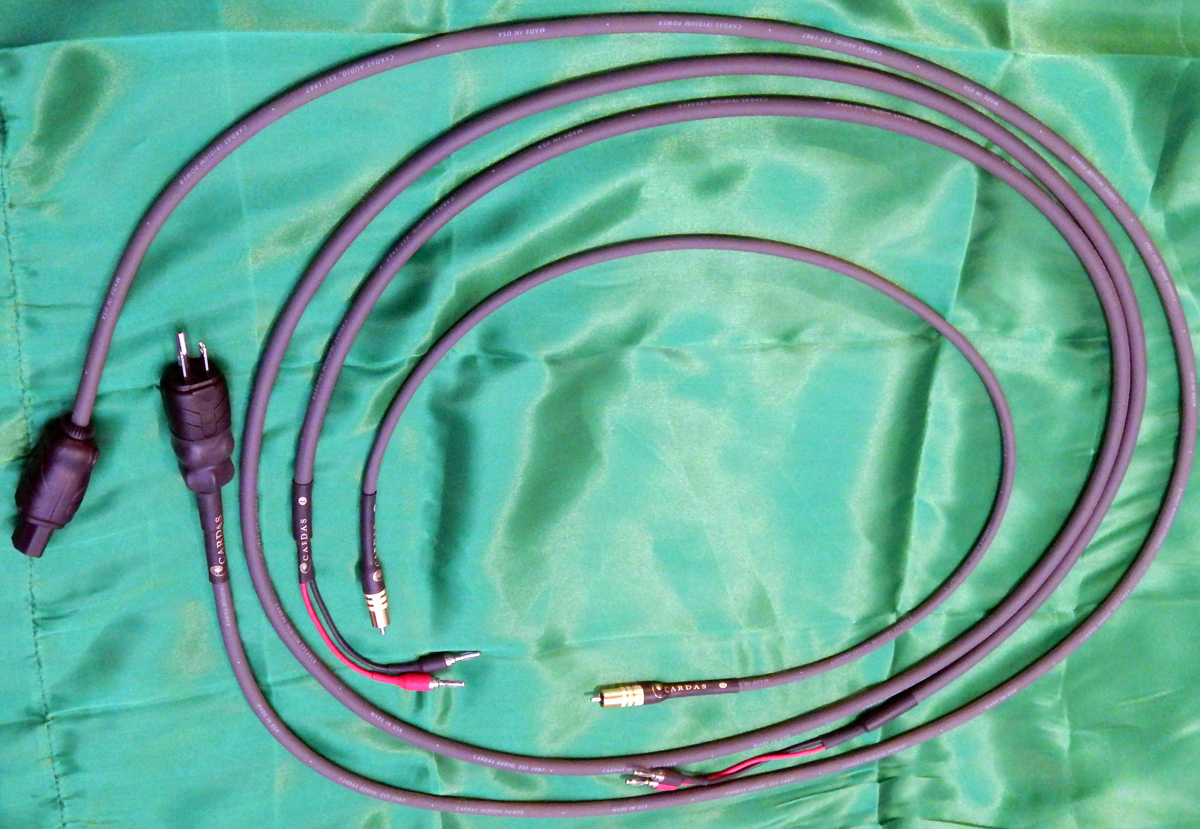
Once again I reach out to my all-time favorite cable line, Cardas, because they are on hand and they introduce the least amount of sonic degradation of any cable I have heard. If the gear sounds good, then I’m not looking for my cable to add anything to the sound and this is something that Cardas excels at. George Cardas’ use of the Fibonacci Sequence to develop his “Golden Ratio” of non-harmonic wire strands for what he calls Constant Q Stranding was inspired. To quote the Cardas home page:
“a high-end audio cable must balance resistance, capacitance, inductance, conductance, velocity of propagation, RF radiation and absorption, mechanical resonance, strand interaction, high filtering, reflections, electrical resonance, dissipation factors, envelope delay, phase distortion, harmonic distortion, structural return loss, corrosion, cross-talk, bridge-tap and the interaction of these and a hundred other things.”
A goal Cardas handily achieves, creating a cable with unmatched in my experience, linear bandwidth, phase linearity, phase coherency, tonal balance, and timbre.
Cardas Iridium cable is their entry-level design incorporating, Golden Ratio, Constant Q, Cross-Field, pure copper Litz, conductor technology, meaning that it provides that unique Cardas performance at a price that fits within the confines a medium budget audiophile system.
The cables used in this review were:
- one 2-meter Cardas Iridium Power Cables ($300)
Technical Specifications:
Construction
Shielded, with two Cardas 11.5 AWG Crossfield Conductors, PFA tape dielectric, toroidal filter, Cardas 3455R Power Connectors.
Termination Options:
Iridium Power comes standard with Cardas 3455R wall plugs & 15 amp IEC connectors, featuring copper blades plated with rhodium over silver. All standard international wall plugs are also available, as are 20 amp IEC connectors.
- one 3-meter pair Cardas Iridium Speaker Cables fitted with Banana connectors ($500).
Technical Specifications:
Construction
.345″ O.D., Cardas copper, PFA dielectric, 2 x 11.5 AWG conductors, Golden section, twin axial construction, litz, neoprene jacket.
Termination Options:
Cardas milled spades, Cardas CABE banana.
The Experience:
Set up was a breeze, all I had to do was connect the speaker cables, plug in the power, download the BluOS Control app, and follow the simple instructions to connect to the WiFi, done. Actually the first thing I listened to was a special Live Jazz concert streamed over the MQA channel, Jazz Re:Fest 2020, but I had not yet received the speakers so thus used a different pair so I’ll skip over that.
Following my usual 100-hour burn-in, I first had to determine which side of the room the OBERON 7s preferred which I did using Qobuz. As it turned out, they much preferred the live end of the room, probably due to the rear-facing port. Also, probably due to the wide dispersion, they liked a wider stance, more triangle than the traditional T placement (equal distance between speakers and listener as opposed to twice the distance between the listener and speakers as the speakers are apart), but once that was settled, they offered a wide and deep soundstage for classical music and an in-room soundstage for studio recordings.

The impact of the bass drum and tympanis for the crescendos of Eiji Oue and the Minnesota Orchestra’s rendition of Stravinsky’s “The Firebird Suite” (“Stravinsky” – 16-bit/44.1kHz – Qobuz) was more than palpable and truly felt as if they were in the room with me, and the soundstage placed me about 15 feet from the stage possibly a front-row box seat. The timbre of the instruments had a medium-sized hall vibe, natural with a strong midrange presence and a cool but robust bottom end with excellent extension.
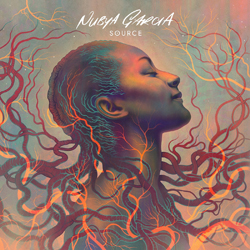
Listening to Nubya Garcia’s “Source” (24-bit/96kHz – Qobuz) was like being in the studio, immediate and intimate. The percussion and sax were about as realistic as I have heard them, and the OBERON 7s never wanted for power with slightly above half volume (60%) providing live performance levels of sound. Again, the bass took center stage with a strong resonance and felt impact. The piano was set back more distant than the other instruments but accurate none the less. The mix put the musicians a little too close together as if it was mixed using headphones, but each instrument had an enveloping soundstage as if recorded in a large room.

In order to get a picture of the MQA performance, I cued up “Isolation” by Jeff Beck and Johnny Depp on Tidal and was treated to a large hall stage edge presentation. As before, the drums really stood out with true to life slam. The guitar was crisp and clear, while the vocal was intimate with that direct from the P.A. richness and power.
On my third day of listening, I decided the OBERON 7s wanted to be farther apart as I was listening in an almost near-field arrangement, so I moved them far enough apart to create an equilateral triangle with my preferred listening position. As this seemed to open things up a little, I revisited the Eiji Oue “Firebird” recording. For the first time with this recording it sounded like a room full of instruments, not only were the solo performers pinpointed but I could hear the individual strings and woodwinds as they performed together.
I also experimented removing the grills, which had surprisingly little effect, making the soundstage a little deeper and extending the high frequencies.
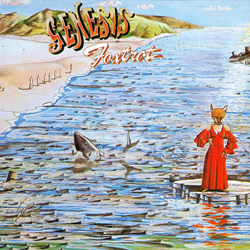
Moving on to my standard test list, I brought up “Can-utility And The Coastliners” by Genesis (“Foxtrot” – 16-bit/44.1kHz). Peter Gabriel was just behind the speakers with the guitars just behind on either side about 6’ away from him. Further back was the drums with the keyboards and bass pedals taking up the rear. There was a distinct difference between the bass pedals and the bass guitar, with the pedals digging deep into the subsonic and the bass guitar exhibiting a sprightly growl. While the soundstage was larger than the room, it had a definite in-studio air.
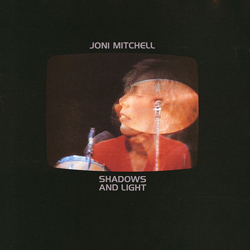
For live music, I picked Joni Mitchell’s “Coyote (Live Version)” (“Shadows and Light” – 24-bit/192kHz) and it was front row at the Greek, just as I remembered it, Jaco burning up the bass, with Joni strumming the guitar and singing her heart out while Bobbye Hall slammed on the percussion.
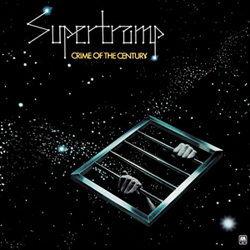
As a Personal Audio reviewer, I would be remiss to not test the headphone output of the Bluesound POWERNODE 2i, so I plugged in my Dan Clark Audio ETHER2 Orthodynamic Headphones and cued up “Crime of the Century” from the Supertramp album of the same title (24-bit/192kHz). The soundstage was vast with plenty of dynamics and the bass was strong and well-controlled. Tonality did not differ much from the OBERON 7s, and there was substantial musicality. While not my first choice in a $900 DAC/Headphone Amp, it would certainly give many a run for their money.
The Conclusions:
I first want to state that the BluOS Control app is the best app of this type I have experienced, it ran flawlessly without hiccup and was pretty much intuitive. My only complaint was that there was no easy way to return to the main menu in Qobuz and Tidal, and though it showed tracks as CD, HD, and MQA it didn’t give the sample rates, though that is probably only a concern for me since I list them in the reviews.
The Bluesound POWERNODE 2i Wireless Multi-Room Music Streaming Amplifier more than exceeded my expectations, though as always a lot of the credit goes to the DALI OBERON 7 Loudspeakers, it never wanted for power, the dynamics were excellent, the sound was musical, there was no thinness to the upper mids which is a common issue with Class D amps, and it was really a one-stop-shop as far as source goes.
As to the DALI OBERON 7s, the word that comes to mind is tight. The bass was copious with excellent extension without ever sounding boomy. I was a bit surprised that with their tiny footprint, that they wanted to be so far apart, but that is probably an aspect of them being theater speakers, which you want to place much farther apart than a two-channel system. They definitely exhibit that Scandinavian sound, accurate, tight, and well-controlled.
The upshoot is that everything worked well together, there was a great deal of synergy in the system, and I could easily see myself, if I was just coming into audio as a budding audiophile, picking this as my end game solution. At a total system cost of $3,198 it falls well within my ideal of budget audiophile and truly represents what I was reaching for when I started this site. Well done, and three thumbs up.

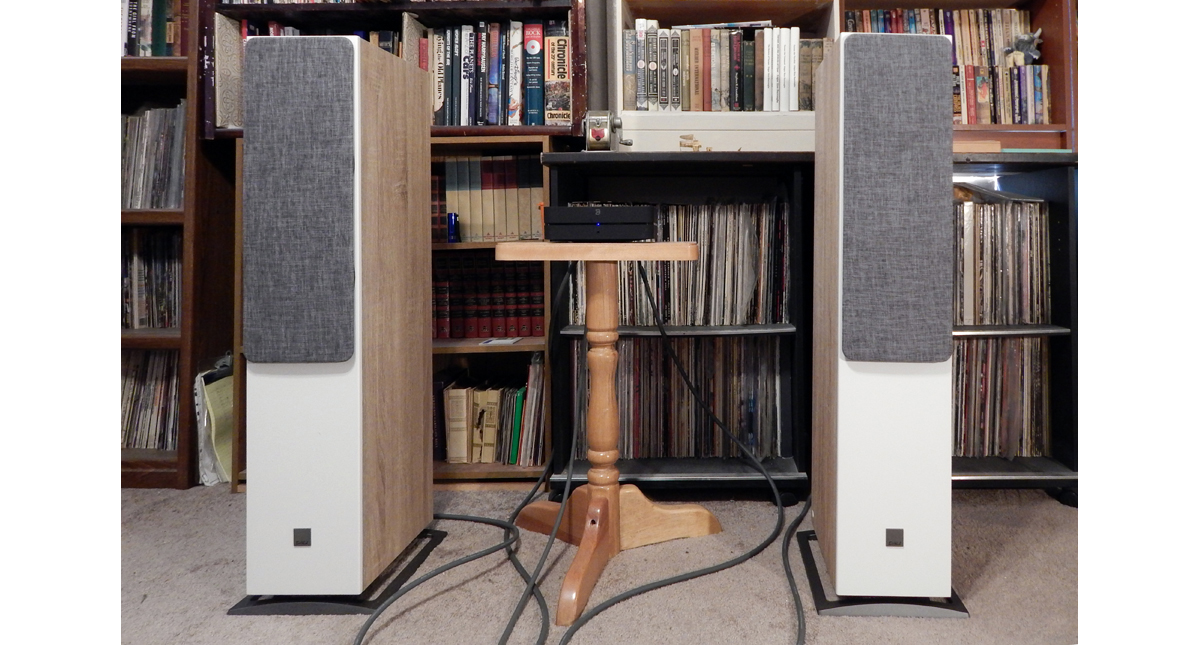






Leave a Reply
Want to join discussion?
Feel free to contribute!